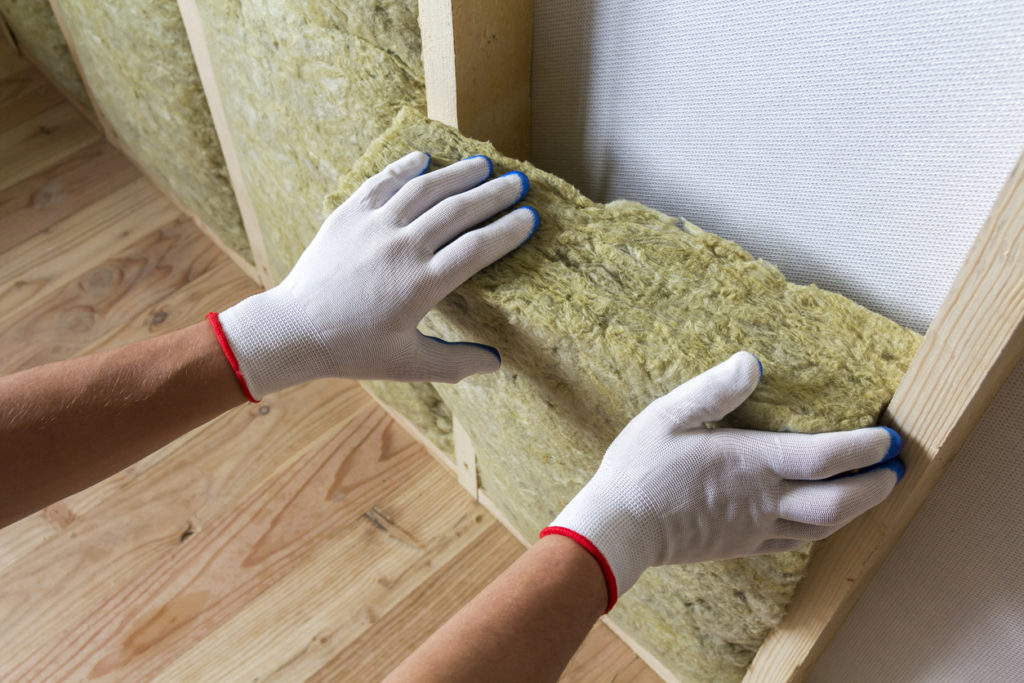One of the most sure-fire ways to increase your Home Energy Score, lower your energy bills, and create a greener home is to ensure you’ve properly insulated your spaces. The place to start? Figure out what kind of insulation you currently have, and how much of it.
But how to figure that out, and what type of insulation do you choose to augment your current situation? With all the types of insulation out there, it can be tricky to figure out what you need. Today, we’ll look at the top 5 types of insulation for the Portland area. Keep reading to find out how to choose what’s right for your home.
How Do We Measure Insulation?
If you head to a hardware store to browse insulation, one of the first things you might notice on the packaging is something called an “R-value.” The “R” in R-value stands for resistance – meaning, the resistance level of the material. A higher R-value indicates that the material does a better job at stopping heat from entering or exiting your home. With that higher performance often comes a higher price tag as well, though you’ll see a return on your investment in the long run in energy savings.
So how much R-value do you need? Check out Energy Star’s national map, which puts the Portland area in zone 4 out of 7.

According to their helpful table, Portland attics should have an R-value of 38 to 60. Before you get intimidated by that high number, note that R-values are cumulative. So if you have existing insulation that doesn’t quite meet that number, you can add a second type on insulation over it. Simply add the R-values together.
What Materials Are Best for Insulation?
Before we get to types, let’s briefly talk materials. The materials you choose will likely have an affect on the cost of your insulation project, and there are many to choose from out there. Most commonly you’ll find:
- Fiberglass. The most common insulation material. True to its name, it’s made up of fibers of glass. You’ve probably seen the big pink sheets of fiberglass before – that’s what we’re talking about. Can be irritating, so you’ll need protective equipment.
- Cellulose. If you prefer to go more green, cellulose consists of recycled paper products. Usually used in loose fill – more on this to come. Usually borate is added to protect against fire and insects.
- Foam. Made either from plastic products or a cement base. Used in spray or firm board insulation.
- Mineral wool. No, not from a sheep. Mineral wool is made from natural minerals or from waste products of molten materials. Naturally fire retardant.
- Natural wool. Yes, from a sheep! Sometimes at least. Usually made from recycled materials, then treated to prevent fire and insects.
- Denim. Denim insulation is made from factory byproducts and recycled jeans – very eco-friendly. It’s also known for being easy to install and nontoxic. However, it is often more costly than other materials.
Top 5 Types of Insulation for Portland
Now that we’ve covered some basics, let’s talk about the practical business of insulating your home. Literally, what does it physically look like? How easy to install? What type is best for certain spaces? Let’s check out five of the top ways to insulate a Portland home.
#1 – Batts and Rolls
Batts and rolls are probably what you picture when you think about insulation. Batts are pre-cut rectangles, whereas rolls can be cut to your specified dimensions. In effect, these are big blankets, usually several inches thick, that you place between joists and framing studs. Typically affordable, depending on the material you choose. (Just like other products, recycled materials tend to be more expensive.) DIY friendly!
#2 – Loose Fill (Also Called Blown In)
Loose fill is exactly what it sounds like. Rather than being packed down into a blanket, loose fill is pumped in using specialized equipment. It looks something like a big hose pumping out foam. Loose fill is particularly useful for hard to reach spaces. If you’ve got any unconventional spots on your attic or tight spaces, loose fill will ensure that everything gets covered. You can do this yourself with the right equipment, but depending on your comfort level, it might be best to hire a professional.
#3 – Foam Board
Foam board has some of the highest R-values out there, so they make a great choice for anyone sensitive to cold or worried about a drafty house. That’ll come at a price, naturally – they aren’t the cheapest. On the other hand, they’re fairly DIY friendly, so you can save some money on that contractor. These compact foam sheets are used as sheathing along interior or exterior walls.
#4 – Spray Foam
Spray foam makes itself useful for filling in and cracks and crannies. It comes in cans that look like a bigger version of a lubricant such as WD40. Simply spray in whatever tight spot you’re trying to close up, and watch it expand and set. Easy to use, but you’ll want some protective gear.
#5 – Radiant Barriers
Radiant barriers are made from reflective material – like aluminum foil. The main purpose, then, is to reflect light and heat. Accordingly, these aren’t great for insulating in cold weather. But they will keep an area nice and cool during the summer heat. A great application for a radiant barrier is a space that doesn’t need heating, such as a garage. You can apply these to your metal garage door, for example.
Top 5 Insulation Types in Review
Insulation is crucial to keeping your Home Energy Score nice and high – and your pocketbook happy. If in doubt, always consult a professional. But the table below should help you start to identify what type of insulation works best for your Portland home.
| Type | Material | R-Value | Cost | Best Application |
| Batts/Rolls | fiberglass, cellulose, mineral wool, natural fibers | medium | low end, for most materials | unfinished ceilings, walls, floors |
| Loose Fill | fiberglass, cellulose, mineral wool | medium-low | mid-range | attics, tight spaces |
| Foam Board | rigid foam panels | high | high end | interior and exterior walls, basement/foundation, low-sloping ceilings |
| Spray Foam | liquid latex or polyurethane foam | medium-high | high end | tight or unconventional spaces |
| Radiant Barriers | reflective material over foam board | not rated | low end | garages or homes in hot climates |
And when you’re ready to see the difference your improvements make on your Home Energy Score, give us a call! Our fair and straightforward pricing will have you on your way in no time.

